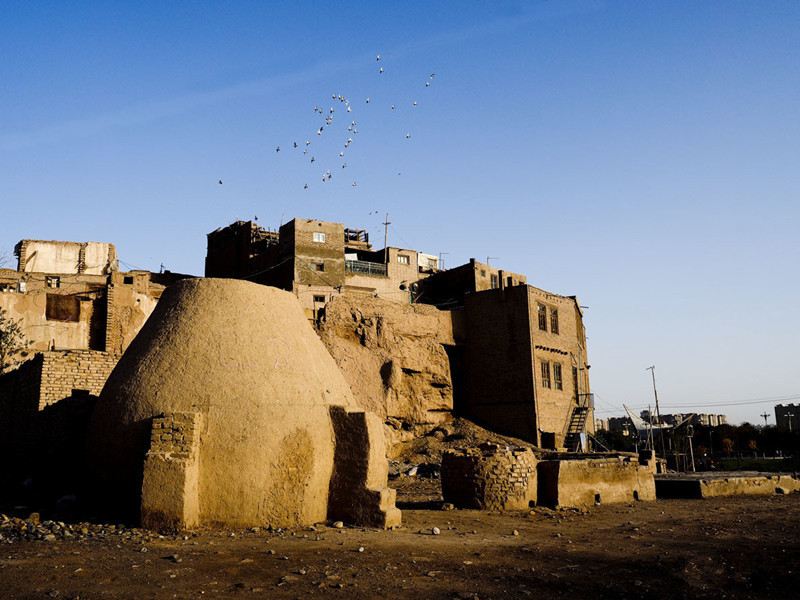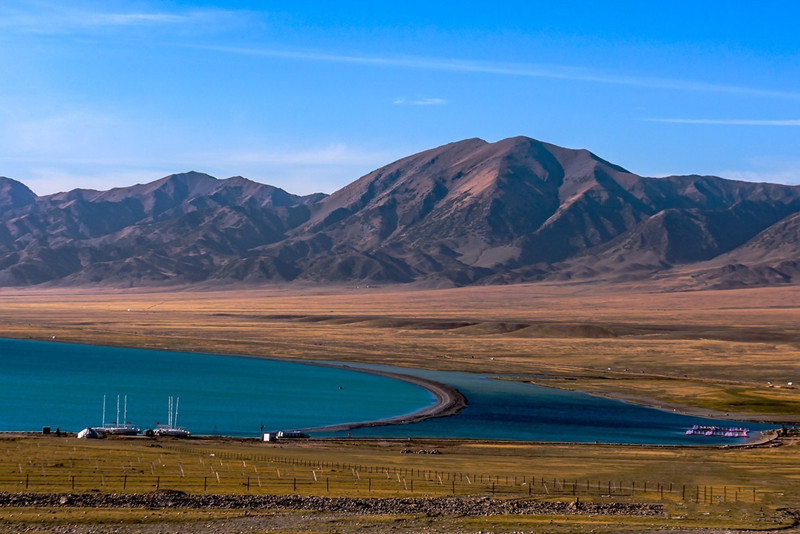How to Plan Xinjiang Tour
A comprehensive experience of Xinjiang (新疆) travel typically centers on pleasant autumn weather (August–October), with a recommended stay of 6–8 days. Must-see attractions include Heavenly Lake (天山天池), Kanas Lake (喀纳斯湖), and Kashgar Old Town (喀什古城). Xinjiang’s elevation ranges from –154 m (Ayding Lake 艾丁湖) to 8,611 m (K2 峰). Summers (June–August) are hot and dry; winters are cold and sunny, with large diurnal temperature swings. The best way to get around is by train for intercity travel and by chartered car or long-distance bus for remote areas; within cities, use ride-hailing services or public buses. Local cuisine blends Central Asian, Turkish, Mongolian, and Han flavors—signature dishes include polo (抓饭), kebabs (烤羊肉串), and naan (馕). When packing, bring photocopies of all documents, layered clothing (quick-dry shirts, fleece or light down), sturdy walking shoes, personal medications (for altitude and digestion), sun protection, and sufficient power banks.
1. Best Time to Visit Xinjiang (新疆)
Spring (March to May)
Summer (June to August)
Autumn (September to October)
Winter (November to February)
2. Recommended Length of Stay
Xinjiang (新疆) spans over 1.6 million km², so for a first visit focus on Urumqi (乌鲁木齐), Turpan (吐鲁番), and Kashgar (喀什) regions in about 6–8 days:
Urumqi (乌鲁木齐) & Heavenly Lake (天山天池)
Turpan (吐鲁番): Flaming Mountains (火焰山) & Grape Valley (葡萄沟)
Kashgar Old Town (喀什古城) & Id Kah Mosque (艾提尕尔清真寺)
Kanas Lake (喀纳斯湖) & Hemu Village (禾木村)
Sayram Lake (赛里木湖)
Optional South Xinjiang (南疆) add-on: Tashkurgan (塔什库尔干)
To cover both North and South Xinjiang (南疆), 12–14 days are ideal.
3. Must-See Attractions
Xinjiang’s top sights span glacial lakes, desert oases, Silk Road heritage, alpine grasslands, and ancient ruins—each offering a unique window into its natural beauty and cultural tapestry.
1. Heavenly Lake (天山天池)
Heavenly Lake sits at 1,980 m on the northern slopes of the Tianshan Mountains, about 110 km from Urumqi (乌鲁木齐). Surrounded by snow-capped peaks and spruce forests, it’s famed for crystal-clear waters reflecting the Bogda Peak; boat rides, lakeside walking paths, and horseback treks are popular activities. In summer, temperatures remain around 15–20 °C, offering respite from the plains’ heat, while autumn turns the surrounding poplars golden.
-
Elevation: ~1,980 m
-
Activities: boat tours, hiking, horseback riding
-
Tip: Combine with a visit to nearby Bustling Bazaar in Sayram to sample local snacks en route.

2. Kanas Nature Reserve (喀纳斯湖 & 禾木村)
Kanas Lake lies at 1,374 m in the Altai foothills and is famed for its turquoise waters and seasonal color shifts—emerald in summer, sapphire in autumn. Hemu Village (禾木村), a traditional Kazakh/Tuvan settlement, offers wooden stilt houses and cultural homestays. Hiking trails climb to panoramic overlooks at 1,800–2,000 m, and boat rides reveal mirror-like reflections of surrounding mixed forests.
-
Elevation: 1,374 m (lake surface)
-
Activities: photography, homestays, forest hikes
-
Tip: Autumn (September–early October) brings the “fairy tale” colors—book lodging well in advance.
3. Kashgar Old Town (喀什古城) & Id Kah Mosque (艾提尕尔清真寺)
As a Silk Road crossroads, Kashgar Old Town preserves labyrinthine alleyways, mud-brick courtyard homes, and traditional crafts. The adjacent Id Kah Mosque, China’s largest mosque by area, welcomes up to 20,000 worshippers and showcases classic Timurid architecture with turquoise domes and intricate tilework. Don’t miss the Grand Sunday Bazaar (Sunday Livestock Market) for livestock trading, Uighur music, and street food—an immersive cultural spectacle.
-
Activities: bazaar shopping, mosque visits, cultural performances
-
Elevation: ~1,300 m
-
Tip: Arrive early (9 AM) on Sunday to see the live animal auctions before crowds peak.
4. Sayram Lake (赛里木湖)
Dubbed the “Last Tear of the Atlantic,” Sayram Lake sits at 2,070 m, 600 km west of Urumqi, surrounded by rolling grasslands and snow-capped ranges. In summer, vast swan flocks breed here, and wildflowers carpet the shore. Horseback riding across the grassland plain under open skies is a highlight—bring wind-proof layers, as temperatures can dip even in July.
-
Elevation: 2,070 m
-
Activities: birdwatching, horse riding, camping
-
Tip: Visit June–September when access roads are clear and local yurt festivals take place.
5. International Grand Bazaar (国际大巴扎)
Located in Urumqi (乌鲁木齐), this bazaar spans over 4 km² and blends traditional Islamic architecture with modern shopping arcades. Stalls sell dried fruits, spices, carpets, and silverware; food courts serve ngon羊肉串 (kebabs), 拉面 (hand-pulled noodles), and 烤包子 (baked buns). At night, the central Sightseeing Tower illuminates in vibrant patterns, creating a festive atmosphere.
-
Elevation: ~800 m (city level)
-
Activities: shopping, street food sampling, evening light shows
-
Tip: Haggling is expected—start at 50% of the asking price.
6. Karakul Lake (喀拉库里湖) & Muztagh Ata (慕士塔格峰)
At 3,600 m, Karakul Lake offers dramatic vistas of the 7,546 m Muztagh Ata (“Father of Ice Mountains”) reflecting perfectly on clear days. Norman Bey’s tent camp provides yurt stays; pack for cold nights (temperatures often fall below 0 °C after sunset). The drive along the Karakoram Highway features high-altitude passes exceeding 4,000 m.
-
Elevation: 3,600 m
-
Activities: photography, yurt camping, cultural exchange with Kyrgyz herders
-
Tip: Acclimatize in Kashgar (1,300 m) or Tashkurgan (3,100 m) before ascending.
7. Ancient City of Jiaohe (交河故城)
Near Turpan (吐鲁番), Jiaohe is a 2,300-year-old earthen city carved from a cliff ridge, once a key Silk Road fortress. The ruins spread over 1 km, with remnants of temples, government offices, and residential caves dating back to the Han dynasty. The site’s wind-eroded structures glow golden in late afternoon light, ideal for photography.
-
Elevation: ~1,100 m
-
Activities: guided history tours, panoramic photography
-
Tip: Combine with nearby Gaochang Ruins for a full Turpan archaeological day.
8. Kizil Thousand-Buddha Caves (克孜尔千佛洞)
Located 70 km east of Kucha (库车), these caves date from the 3rd–8th centuries CE and contain over 230 grottoes with mural paintings depicting Buddhist sutras, donors, and Silk Road life. Restricted visitor numbers preserve the art—book tickets online or via tour operators.
-
Elevation: ~1,200 m
-
Activities: art-history exploration, guided cave tours
-
Tip: Bring a flashlight and respect photo-prohibition zones to protect pigments.
Key Travel Tips
-
Advance Booking: High-season (Aug–Oct) accommodation in Kanas, Kashgar, and Sayram sells out quickly.
-
Altitude Preparation: Sites above 2,000 m warrant at least one day of rest and altitude-aid medication.
-
Local Guides: Hiring licensed guides enriches cultural understanding and eases permit navigation in restricted zones.
-
Cultural Respect: Dress modestly in mosques and minority villages; always ask before photographing people.
By planning around these eight highlights—each with distinct landscapes, cultural depth, and logistical considerations—you’ll experience the breadth of Xinjiang’s natural wonders and Silk Road heritage.
4. Best Ways to Get Around
-
Rail: High-speed and conventional trains connect Urumqi (乌鲁木齐) with Turpan (吐鲁番), Hami (哈密), and beyond; book via 12306.cn.
-
Road: Self-drive or chartered vehicles offer flexibility in remote regions; long-distance buses link regional towns, albeit with strict security checks.
-
Urban: Ride-hail apps, taxis, and city buses; many scenic areas provide shuttle buses.
5. Local Cuisine
Xinjiang cuisine, also called Uyghur cuisine, reflects the region’s position at the crossroads of the Silk Road – melding Central Asian, Middle Eastern, Mongolian, and Han Chinese culinary traditions. Lamb and mutton reign supreme, aromatic spices like cumin and chili lend bold flavors, and flatbreads and noodles showcase wheat-based staples. Meals often follow Islamic halal practices, emphasizing communal dining and slow-cooked preparations.
Historical Roots & Culinary Influences
Xinjiang’s culinary heritage stems from centuries of Silk Road exchange, bringing Persian pilaf techniques, Turkic kebab methods, and Central Asian dairy traditions into local kitchens. The region’s ethnic tapestry—Uyghur, Kazakh, Kyrgyz, Hui, Han—shapes diverse sub-cuisines, yet lamb, wheat, and dairy remain unifying threads. Halal dietary laws guide meat sourcing and preparation, ensuring broad appeal across Muslim communities
Key Ingredients & Flavor Profiles
-
Meats: Predominantly lamb and mutton, prized for richness and tolerance of slow cooking. Goat and beef appear less frequently.
-
Grains: Wheat flour (naan/馕, hand-pulled noodles/拉面) dominates over rice outside polo dishes. Corn, barley, and millet also feature in rural areas.
-
Spices & Fats: Cumin seeds, chili flakes, black peppercorns, garlic, and onions build base flavors; animal fats (lamb fat, butter) impart depth.
-
Dairy: Yogurt, ayran (salted yogurt drink), and horse milk products appear in Kazakh/Kyrgyz-influenced zones.
Signature Dishes
Uyghur Polo (抓饭/Zhuāfàn)
A pilaf of rice, carrots, and lamb cooked in seasoned lamb fat. Often studded with raisins or dried apricots, it epitomizes Silk Road rice dishes.

Laghman (拉条子/Lamian)
Hand-pulled wheat noodles served in a savory lamb-and-vegetable stir-fry or broth. Chewing these al dente noodles is an attraction in itself.

Kebabs (烤羊肉串/Kaobing)
Skewered lamb chunks marinated with cumin, chili, and salt, char-grilled over coals. Street-side stalls sell them by the stick for a few RMB each.

Big Plate Chicken (大盘鸡/Dàpánjī)
Chicken pieces stewed in chili oil with potatoes and peppers, served atop hand-pulled noodles or flatbread—comfort food at its heart.

Naan (馕/Nang)
Leavened flatbread baked in a tandoor-like clay oven, with variants topped by sesame or nigella seeds.
Kuyrdak (库尔达克)
A rustic stir-fry of lamb offal, onions, and potatoes—traditionally cooked in a kazan (cauldron) over open flame.

Samsa (烤包子/Kao Baozi)
Triangular baked pastries filled with spiced minced lamb and onion; similar to Central Asian samsa or samosa.
Dapanji Noodles (大盘鸡拉面)
A fusion of big plate chicken served directly on freshly pulled noodles, soaking up the rich gravy.
Dining Culture & Etiquette
-
Communal Eating: Dishes often share a large platter, eaten with chopsticks or hands (for naan); rice and noodles can be scooped together.
-
Tea & Drinks: Black tea (红茶) accompanies meals; in Kazakh areas, salty ayran or fermented mare’s milk is offered.
-
Street Food: Night markets and roadside stalls brim with kebabs, laghman, grilled corn, and naan—ideal for sampling multiple dishes cheaply.
-
Halal Observance: Restaurants display halal certification; non-Muslim visitors generally find kitchens accommodating dietary needs.
Regional Variations
-
Northern Xinjiang: Urumqi (乌鲁木齐) and Ili (伊犁) emphasize Uyghur staples – polo, kebabs, laghman – with fresh dairy from Kazakh herders nearby.
-
Southern Xinjiang: Kashgar (喀什) infuses more dried fruits (apricots, raisins) and sweet-savory balances; tandir nan thicker and chewier.
-
Mountain vs. Desert: Highland pastures near Kanas (喀纳斯) yield richer dairy items; Turpan (吐鲁番) oasis zones produce sweet grapes for dried fruit snacks.
Practical Tips for Foodies
-
Where to Eat: Seek out family-run “old-style” restaurants (老饭店) for authenticity; ask locals for “polo” – it’s seldom on English menus.
-
Hygiene: Opt for busy stalls with turnover; bottled water is safer than tap.
-
Timing: Lunch peaks at 11 AM–2 PM; dinner at 6 PM–9 PM. Some rural stalls may close by dusk.
-
Cost: A hearty meal (polo or big plate chicken with naan) costs 20–40 RMB; kebabs are 3–5 RMB/stick.
6. Weather Overview
| Season | Months | Avg. High (°C/°F) | Avg. Low (°C/°F) | Precipitation (mm) |
|---|---|---|---|---|
| Spring | March – May | 5 – 20 °C (41 – 68 °F) | –2 – 10 °C (28 – 50 °F) | 20 – 40 mm (sparse) |
| Summer | June – August | 25 – 32 °C (77 – 90 °F) | 12 – 20 °C (54 – 68 °F) | 30 – 60 mm (most rain) |
| Autumn | September – October | 10 – 22 °C (50 – 72 °F) | 5 – 12 °C (41 – 54 °F) | 10 – 30 mm (light) |
| Winter | November – February | –11 – 5 °C (12 – 41 °F) | –20 – –5 °C (–4 – 23 °F) | 5 – 15 mm (very dry) |
-
Spring (March–May):
Temperatures rise rapidly from spring’s chill; daytime highs climb from about 5 °C in March to around 20 °C by May, while nights remain cool to chilly. Rainfall remains light, totaling roughly 20–40 mm over the season -
Summer (June–August):
Peak heat arrives in July (avg. highs up to 32 °C in Kashgar, 26 °C in Ürümqi), with nights remaining warm. Though overall precipitation is modest (30–60 mm), nearly all occurs in flash showers or brief storms, especially in northern Xinjiang. -
Autumn (September–October):
Often considered ideal, with crisp, clear days (10–22 °C) and cool nights. Rainfall tapers off to 10–30 mm, and landscapes burst with golden hues in poplar groves and forests . -
Winter (November–February):
Extremely dry and cold, especially in January when lows dip to –20 °C in some northern basins. Snowfall is minimal (5–15 mm over four months), but strong sunshine can make midday temperatures feel milder .
7. Altitude Range
-
Highest: K2 Peak at 8,611 m.
-
Lowest: Ayding Lake (艾丁湖) at –154 m near Turpan (吐鲁番).
-
Common Destinations: Heavenly Lake (天山天池) at 1,980 m; Kanas Lake (喀纳斯湖) at 1,374 m; Sayram Lake (赛里木湖) at 2,070 m; Karakul Lake (喀拉库里湖) at ~3,600 m.
8. Packing Recommendations
-
Documents & Electronics: Passport, visa, ID, driver’s license, photocopies; power banks and universal adapters.
-
Clothing: Quick-dry layers, light down or fleece jacket, rain shell, sun hat, sunglasses, sunscreen; sturdy hiking shoes.
-
Health & Toiletries: Altitude sickness medication (e.g., Rhodiola), digestive aids, motion sickness pills, basic first-aid.
-
Photography Gear: Camera, extra batteries, memory cards, tripod.
-
Daypack: For daily excursions; if camping or multi-day treks, include sleeping bag and headlamp.


















